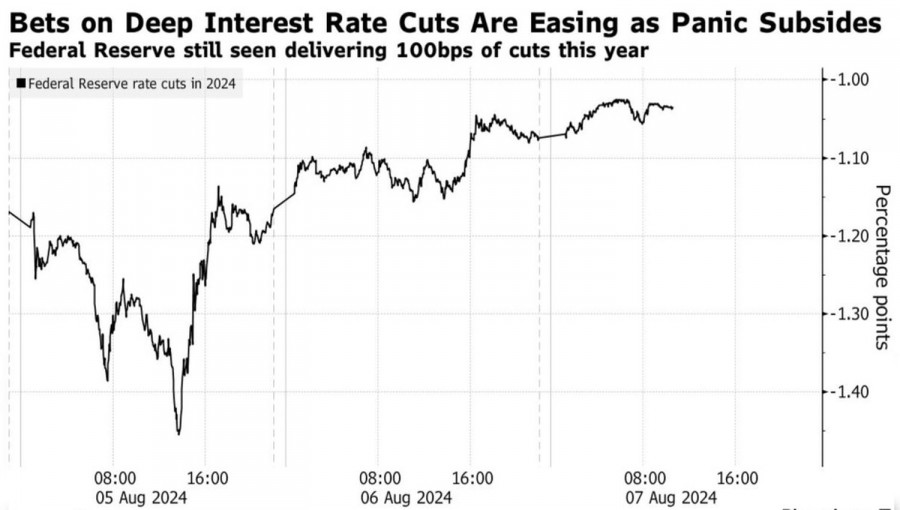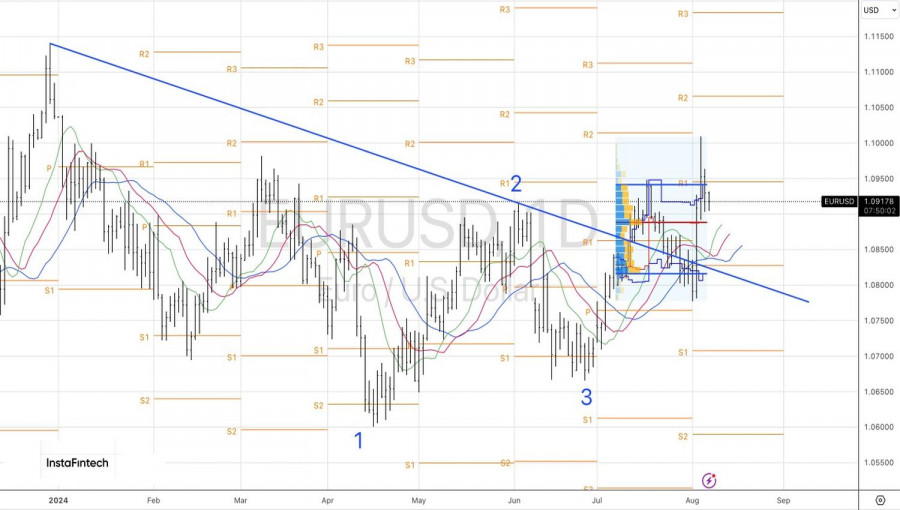A tsunami results from an underwater earthquake displacing a large amount of water. It has to go somewhere before it settles. The same is true for a market tsunami. There are reasons. In the case of Black Monday on August 5, it was the tightening of monetary policy by the Bank of Japan and fears of a recession in the US economy following a disappointing employment report for July. There are consequences. For EUR/USD, it soared above the 7-month high of 1.1. There's the settling of water. The Fed and the BOJ calmed investors, and many assets rode the roller coaster.
The billion-dollar question: where will the USD index go? On one hand, the Federal Reserve makes no secret of its desire to cut the federal funds rate in September, which, coupled with the slowdown in the US economy, paints a bullish picture for EUR/USD. ING believes that the main currency pair will return above 1.1 soon, and MUFG forecasts its northern march to continue until the second quarter of 2025. Yes, the presidential elections in the US will increase turbulence in the financial markets, but they are unlikely to change the direction of the trend.
On the other hand, market expectations for a 100 basis point cut in the federal funds rate in 2024 are inflated. It is unlikely that the Fed will press the panic button in September and aggressively ease monetary policy as investors demand. According to FOMC officials, the economy is not in a recession, and if its health continues to deteriorate, a dovish rhetoric can be adopted.
Dynamics of market expectations for the scale of the Fed's monetary easing

At the peak of Black Monday, market expectations for the scale of the Fed's monetary easing this year reached 150 basis points, suggesting three rate cuts of 50 basis points each. Gradually, the panic subsided, the market is now recovering, assessments are changing, and the EUR/USD bulls retreated from 1.10.
Will they return there? Reuters experts suggest it is unlikely, at least in the near term. Their consensus estimate for the main currency pair is 1.08 in three months and 1.11 in twelve. The US dollar is more likely to strengthen against the euro rather than fall. And there are reasons for this.

The slowdown of the American economy is a sort of earthquake that affects the rest of the world. Global GDP is also slowing down, which is bad news for a pro-cyclical currency like the euro. The market has overestimated the extent of the federal funds rate cut in 2024, just as it did at the end of last year. As a result, the US dollar strengthened in the first quarter.
Technically, on the daily chart, EUR/USD consolidates within the Adam and Eve pattern. The formation of an inside bar provides an opportunity to define entry points for long positions from the level of 1.096 and shorts from 1.090. It remains to set pending orders and wait for their execution.
The material has been provided by InstaForex Company - www.instaforex.com #


No comments:
Post a Comment